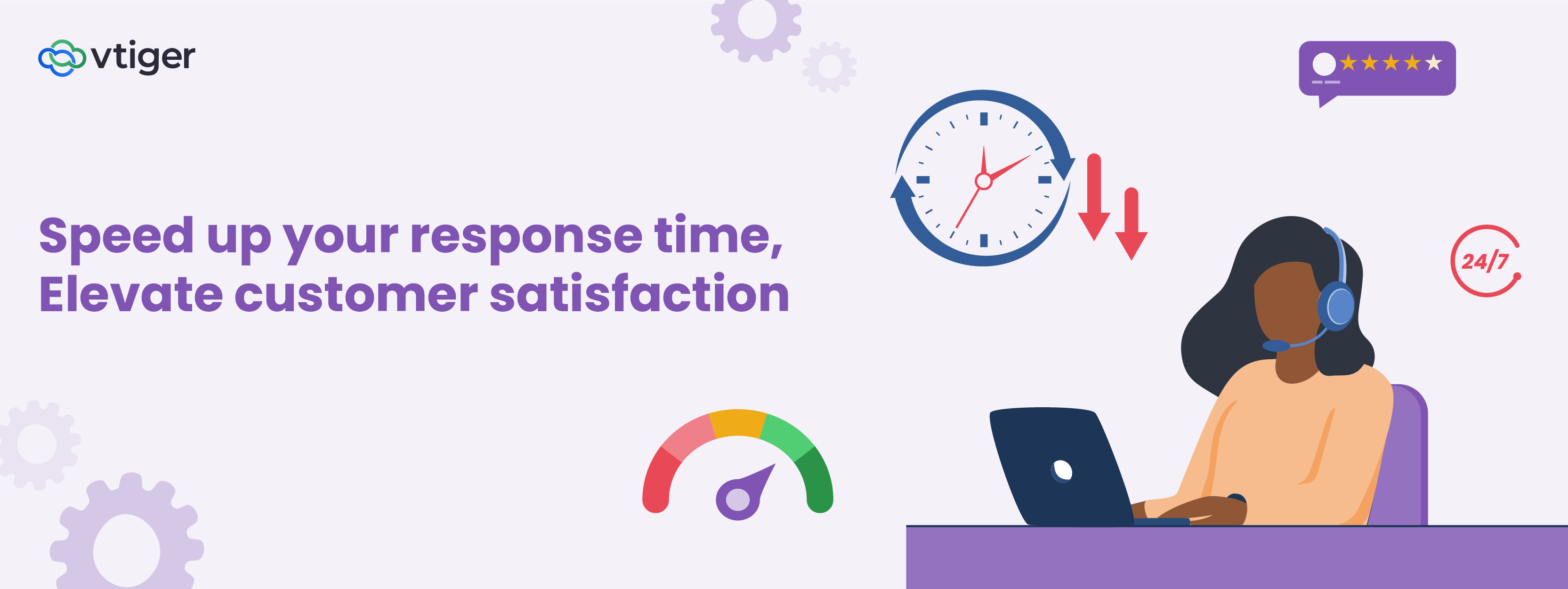A delightful customer experience (CX) is definitely a brand differentiator. Your organization can witness holistic growth if you can provide better customer service. Customers have innumerable demands and one such demand is an immediate response to their queries.
Delays in responses may lead to customer dissatisfaction and also increase customer churn.
So, how can you reduce customer response time when you have to deal with a large volume of queries? There is no one-size-fits-all approach to reducing customer response time and improving customer service. Many organizations have adopted different ways to increase response rates and elevate the customer experience.
By providing immediate solutions to your customer’s problems you can:
- Increase customer loyalty and trust as they will feel valued
- Increase sales revenue
- Boost customer satisfaction level
- Get repeat sales
Now, let’s understand in detail the different ways to reduce customer response time below
4 effective ways to reduce customer response time
If you have a small business or a large enterprise, accelerating better response time is very much essential to direct your business on the path of success. Here are a few methods to reduce your response time and achieve greater satisfaction:
Offering training to customer support executives
Empower your support team by providing regular training sessions which will allow them to refine their skills. You can provide resources to learn various strategies for prioritizing customer queries, improving communication skills, and leveraging technology to get things done quickly.
With the right coaching, your reps will be able to gain relevant knowledge to provide faster responses. You can train your employees by creating and publishing courses using LMS.
The LMS software allows you to customize courses according to the rep’s requirements and provide certificates at the end of the course. These courses can help onboard new employees and upskill existing employees in your organization.
You can also set up an updated internal knowledge base so that they can refer to it at their convenience. The knowledge base can include help articles, blogs, instructional guides, etc
Deploying automation tools
Customer service automation can significantly improve response time. You can implement virtual assistants for engaging in real-time conversations, case routing to automatically distribute cases to the reps, and more. All these automation tools will free up reps’ time and improve the accuracy and consistency of support responses.
Setting guidelines for response time
You can ensure customer queries are addressed on time by establishing clear expectations for response times. Guidelines can be set based on different factors such as urgency and complexity of the issue. Once the guidelines are set it will be easier for reps to prioritize their work and promote user satisfaction.
Measuring response time
You can use different methods to calculate the time taken by reps to respond to customer queries. For instance, you can calculate First Response Time (FRT) to understand the time taken by the rep to respond to a customer query when it was raised for the first time.
FRT is more important in customer support than the overall responses because it gives you an idea of how quickly reps respond to a new case. These metrics will be beneficial especially for support managers to monitor the performance of support reps. And, they can also provide valuable feedback based on the metrics to improve response times.
One of the key takeaways from the blog is that businesses should focus more on improving response time as it will help in building a better brand image and achieving brand loyalty.



